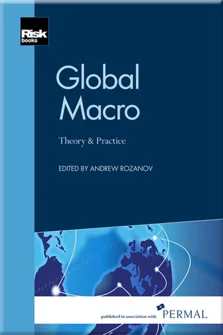The Case for Global Macro in Institutional Portfolios
Arjan Berkelaar
Global Macro: Theory and Practice, Introduction
Global Macro: Origins, History, Prospects
Discretionary Global Macro: A Manager’s Perspective
Systematic Strategies: A Quantitative Approach to Global Macro
The Different Shades of Macro
The Role of a Global Macro Strategist
Emerging Markets in Global Macro Investing
Risk Management in Global Macro Funds
Geopolitical Risk in Global Macro Investing
Global Macro: A Prime Broker’s Perspective
Understanding Global Macro Leverage
Global Macro: An Investment Consultant’s Perspective
Global Macro: a Fund of Hedge Fund’s Perspective
The Case for Global Macro in Institutional Portfolios
GTAA and Global Macro for Long-term Institutional Investors
This article was first published as a chapter in Global Macro: Theory and Practice, by Risk Books.
Global macro strategies attempt to generate returns by investing globally in equity, interest rate, commodity and currency markets. These strategies often employ leverage and typically use futures and currency forward contracts, as well as options on futures contracts to implement bets. Global macro is typically classified as either discretionary (ie, managers use subjective judgement in assessing market conditions) or systematic (ie, managers use a quantitative or rule-based approach to investing). A subset of systematic global macro strategies are commodity trading advisors (CTAs), sometimes also called managed futures. CTAs tend to be trend-following or momentum traders and typically use very little discretion, instead relying on computer programmes to follow price trends. This chapter will analyse both discretionary global macro and managed futures strategies from the perspective of a long-term institutional investor, such as an endowment or a foundation.
Traditionally, such investors have allocated only a small portion of their overall portfolio or their hedge fund portfolio
Copyright Infopro Digital Limited. All rights reserved.
As outlined in our terms and conditions, https://www.infopro-digital.com/terms-and-conditions/subscriptions/ (point 2.4), printing is limited to a single copy.
If you would like to purchase additional rights please email info@risk.net
Copyright Infopro Digital Limited. All rights reserved.
You may share this content using our article tools. As outlined in our terms and conditions, https://www.infopro-digital.com/terms-and-conditions/subscriptions/ (clause 2.4), an Authorised User may only make one copy of the materials for their own personal use. You must also comply with the restrictions in clause 2.5.
If you would like to purchase additional rights please email info@risk.net











